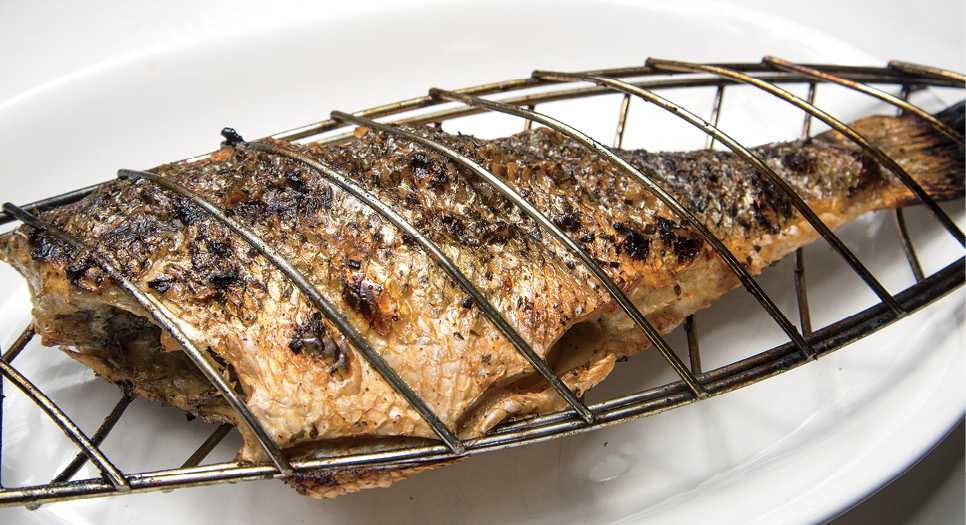

There is one overriding secret to cooking great fish: Buy fresh fish. Fish quality deteriorates rapidly after it dies, more rapidly than any other meat. There is a noticeable quality difference in a fish caught today and a fish caught three days ago. Freshness often trumps the type of fish. I would rather have fresh farm-raised salmon than week-old wild grouper. If you live along the coasts, you have a distinct advantage. But even if you live in the center of the country, it’s possible to get good fish, but it isn’t easy and you need to be prepared to pay more.

Fish remain freshest when covered in ice. The flesh needs to be as cold as possible without freezing. Freezing can create ice shards that rupture the cells, which in turn causes juice to purge and creates a mushy texture. The surface of the fish should remain moist. There is no substitute for fish in direct contact with ice. Stores that lay the fish on trays or plastic on top of ice are just trying to save money on ice.
That doesn’t mean you should avoid all frozen fish. Fishing boats are often at sea for weeks, and many have flash-freezing equipment. These chillers are extremely cold and freeze the fish so quickly that large ice crystals can’t form. A flash-frozen fish is far superior to a never-frozen fish that has been in a ship’s hold for a few days, then shipped to a warehouse, and finally to your store.
Buy from a store that sells a lot of fish. Specialty fish stores that buy directly from the docks or seafood distributors are the best sources. Get to know your fishmonger. When you go in, ask for him or her by name and inquire what is fresh today. Find out when your favorite species are in season and what regions produce the best. Cold-water varieties tend to be fattier, and it’s the fat that carries flavor and moisture. Swordfish from the northern hemisphere, for example, is best in late summer. Line-caught Alaskan salmon is at its prime in spring.
A good source of information is the seafood guides section of FishChoice.com. It also tells you which species are endangered and should be avoided.
Fish is often labeled with the catch date, but there are several indicators of freshness if you don’t have the catch date. Your nose is the best judge: Fresh fish should smell more like the ocean or seaweed than fish. Its eyes should be clear. Sometimes eyes get bruised in handling, but cloudy eyes are one indicator that the fish may be older. Gills should be bright red. Gills mix blood and oxygen; if they are turning brown, it is a good sign the fish has been dead a while.
The cut matters a lot, too. You can get fish whole (usually gutted and scaled), filleted (each side is removed from the spine, backbones, and ribs), or as steaks (cut across the body). Each cut requires a different approach to cooking.
Most fish is white fleshed, lower in myoglobin, higher in water content, and lower in fat than other meat. This poses some problems for the grillmaster, but they are easily overcome.
The good news is that fish absorbs marinades and salt better, so you can flavor it more easily—30 to 60 minutes of dry or wet brining improves its flavor and moisture significantly. The bad news is that it cooks quickly, is delicate, and can fall apart unless you handle it carefully. Fish loves the grill so much that it sometimes just won’t let go. I discuss how to deal with this problem on page 107.